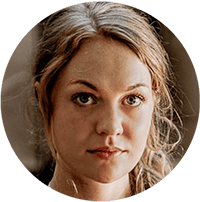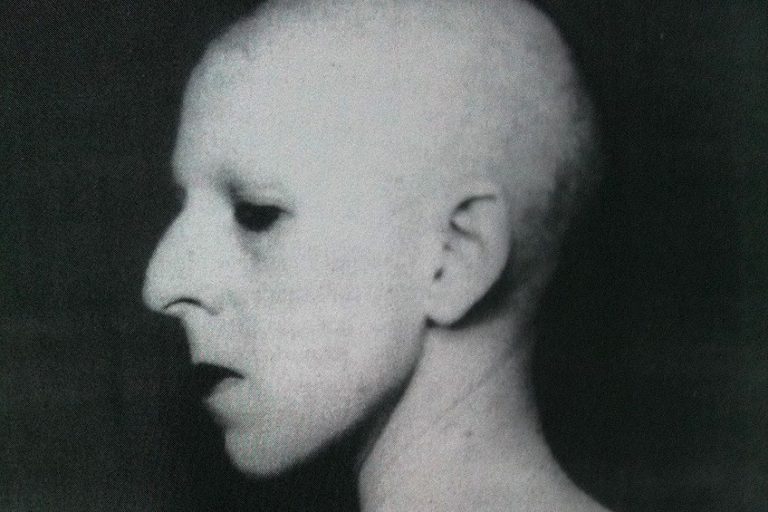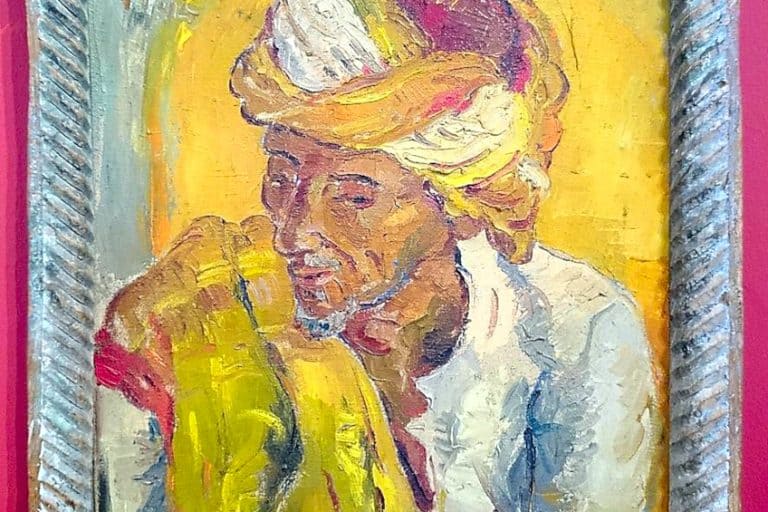Marlene Dumas – Discover the Famous South African Painter
Marlene Dumas is one of today’s most recognized painters. Dumas is a South African-Dutch painter whose work offers intense and poetic glances into the psychology of humanity. With an expressive and emotional style, she explores themes of gender, race, identity, sexuality, love, death, and shame. This biography will explore the life and career of a truly remarkable artist.
Table of Contents
Artist in Context: Who Is Marlene Dumas?
| Date of Birth | 3 August 1953 |
| Country of Birth | Cape Town, South Africa |
| Art Movements | Neo-Expressionism and Contemporary art |
| Mediums Used | Painting and drawing |
Since the 1980s, Marlene Dumas’s artworks have been celebrated and exhibited in several solo exhibitions around the world. Her extensive career reflects her consistency and drive. Since the start of her career, Dumas’s lyrical paintings have captivated viewers and sparked engaging discussions.
Below, we explore the experiences that shaped Dumas into the artist we know and love today.
Childhood
Marlene Dumas’s upbringing was filled with both joy and tragedy. She was born on the 3rd of August, 1953, to a Protestant Afrikaner family in Kuils River, a semi-rural region just outside of Cape Town, South Africa. Her mother was a housewife, while her father maintained a small vineyard called Jacobsdal, which had been in the family since 1916. Dumas was the youngest of three children and had two brothers, Cornelis and Pieter. Being the youngest, however, she was often left alone to entertain herself. She would spend hours reading books and drawing, acquiring an early interest in the arts.
Her parents pushed her to follow her hobbies and were supportive of her creativity. Dumas began collecting pictures as a child and enjoyed sketching cartoonish girls. She explains that she always drew faces and figures, never trees.

However, tragedy struck when Dumas was only 12 years old. Her father died unexpectedly of liver disease, leaving her family devastated. The death of her father had a great effect on Dumas, and it would influence her work as an artist later in life.
She has stated that her father’s death left her feeling abandoned and vulnerable, and that she has spent her life attempting to make sense of that event through her art.
Growing up in South Africa throughout the 1950s and 1960s, Dumas was exposed to apartheid’s atrocities, which heavily shaped her perspective and artistic practice. She witnessed first-hand the apartheid system’s oppression and prejudice towards non-white South Africans. Despite these difficulties, Dumas’ childhood was also full of joy and creativity.
Education
After completing her primary and secondary education in South Africa, Marlene Dumas enrolled in the University of Cape Town in 1972, where she studied Fine Arts. During her time at the university, she was exposed to a diverse range of artistic styles and movements, including contemporary African art, European and American Modernism, Conceptual art, and Body art.
Dumas’s studies provided her with a strong foundation in art history and technique, and she developed a keen eye for detail and composition.
These years were pivotal for Dumas, exposing her to a diverse spectrum of significant thinkers, artists, and practices. Dumas credited her photography lecturer Dimitri Nicolas-Fanourakis with urging her to explore the work of photographer Diane Arbus, whose ability to use images to connect viewers to present concerns had a great impact on Dumas. Dumas began painting in 1973, with work expressing her political views and reflections on her status as a white South African female. She experimented with several techniques, including text, collage, and watercolor.
Dumas received her Fine Arts degree in 1975 and decided to relocate to the Netherlands to further her studies. After earning a two-year scholarship, she enrolled at Ateliers ’63 in Haarlem, a prominent art school that has educated some of Europe’s leading artists. Dumas was exposed to a wide variety of artistic approaches whilst at the Ateliers ’63 and the institution’s focus on experimentation was a natural fit for Dumas’ artistic instincts.
Dumas created her signature technique of painting and drawing while she was a student at Ateliers ’63. Her art became distinguished by its expressive and emotional qualities, whilst also exploring controversial themes such as politics, racism, and sexuality.
In addition to her studies at Ateliers 63, Dumas also studied Psychology at the University of Amsterdam from 1979 to 1980. Dumas’ schooling played a significant role in shaping her artistic practice and giving her the intellectual and technical resources she required to produce her ground-breaking work. Along with her natural talent, the wide variety of influences and experiences she encountered during her studies helped her to forge a distinctive artistic voice that still inspires artists today.
Early Career
Early in her career, Marlene Dumas experimented with several styles and methods and was not afraid to take on contentious issues in her writing. She started exhibiting her paintings and drawings in group exhibitions across the Netherlands after completing her studies at Ateliers ’63. She held her first solo show in a Paris gallery in 1979. She was chosen to participate in Documenta VII in 1982, and her first solo show in Amsterdam was exhibited in 1983 by the gallery Helen van der Meij.
In 1984, Dumas was invited to exhibit at the Sydney Biennale, where her work would be displayed alongside that of Mike Kelley and Anselm Kiefer. At the Biennale, Dumas explains that she had very little space to display her rather small work.
She explains that the scale and magnitude of Kiefer and Kelley’s work felt monumental compared to her own. It was at that moment that Dumas realized that she “wanted to compete a bit with the boys”. This was a pivotal moment in Dumas’s career. In 1985, she had her first solo show with Paul Andriesse, her friend and colleague who had represented her for many years. The exhibition featured 11 large-scale portraits. Dumas’ decision to paint solely in oil for this exhibition irrevocably altered her career trajectory.

Dumas soon became recognized as one of the Netherlands’ most influential painters. She became renowned for the emotional depth and rawness of her work, which explored complex emotions, such as fear, desperation, and shame. During this time, Dumas started to establish a reputation as a provocative artist who wasn’t afraid to take on socio-political subjects. Some people criticized her for exploring racial and gender issues in such a direct manner, but Dumas persisted in following her artistic vision, continuing to produce thought-provoking pieces that provoked discussion.
Dumas experimented with numerous styles and methods early in her career, including collage, printmaking, and mixed media.
She has broadened the scope of her subject matter to include portraits of a wide range of people, from the famous Amy Winehouse and Osama bin Laden, to unknown prostitutes. Along with her technical proficiency and creativity, Dumas’ early career was distinguished by her willingness to take chances and address contentious issues. She is one of the most significant painters of the 20th century due to her distinctive style of painting and drawing and her capacity to convey the complexity of human feeling.
Mature Career
Dumas gave birth to her only child Helena in 1987. Her daughter became the subject of many of her paintings. During her mature career, Dumas however continued to explore themes including identity, sexuality, and politics. Her paintings and drawings were displayed in solo exhibitions at some of the most renowned institutions in the world during the 1990s and 2000s, as she continued to acquire recognition for her work on a global scale.
The emotional ferocity and rawness of Marlene Dumas’s paintings during this time period set her apart. Her sad depictions of human figures that inspired a sense of fragility and desire were frequently made using a small palette of subdued hues and indistinct outlines.
She questioned conventional ideas of beauty and gender while exploring the connection between the human body and identity in her paintings and drawings. In her mature career, Dumas has earned numerous honors and awards. She represented the Netherlands at the Venice Biennale in 1995 and in 1998 and was awarded the David Roell Prize. In 2012, Dumas received the prestigious Johannes Vermeer Award.
An impressive retrospective of Dumas’ work was presented at the Tate Modern in London in 2015, solidifying her position as one of the most significant painters of her time. Dumas has carried on producing innovative work in recent years, delving into subjects like social justice, terrorism, and migration. In 2022, Duma’s most expansive retrospective was hosted at the Palazzo Grassi in Venice.
The exhibition was part of the Venice Biennale’s extended program and included over 100 seminal works Dumas created over her career thus far.
25 Seminal Marlene Dumas Artworks
Marlene Dumas is one of the most prominent painters working today. Known for her emotionally charged paintings and drawings, her work addresses a variety of socio-political issues, including themes such as identity, sexuality, and politics.

Throughout her career, she has created a vast body of work that has challenged viewers and sparked conversation. Listed below are 25 seminal Marlene Dumas paintings and drawings that demonstrate the sensitivity with which Dumas explores difficult emotions and social themes in her work.
| Artwork Title | Date | Medium | Size (cm) | Collection |
| Die moeder van die veroordeelde (The Mother of the Convict) | 1985 | Oil on canvas | 125 x 105 | Private collection |
| The Particularity of Nakedness | 1987 | Oil on canvas | 140 x 300 | Collection Van Abbermuseum, Eindhoven, Netherlands |
| Snowwhite and the Next Generation | 1988 | Oil on canvas | 140 x 200 | Centraal Museum, Utrecht, Netherlands |
| The Painter | 1994 | Oil on canvas | 200 x 100 | The Museum of Modern Art, New York City, United States |
| Betrayal | 1994 | Ink on paper | 29 parts, 60 x 50 each | Private collection |
| Magdalena (Out of Eggs, Out of Business) | 1995 | Oil on canvas | 200 x 100 | Collection S.M.A.K. Stedelijk Museum voor Actuele Kunst Ghent/Flemish Community, Amsterdam, Netherlands |
| Drunk | 1997 | Oil on canvas | 200 x 100 | Collection De Bruin-Heijn |
| D-rection | 1999 | Oil on canvas | 100 x 56 | Private collection, long-term loan to De Pont Museum, Tillburg, Netherlands |
| Taboo | 2000 | Oil on canvas | 230 x 60 | Collection of Mitzi and Warren Eisenberg |
| Candle Burning | 2000 | Oil on canvas | 50 x 40 | Pinault collection |
| Immaculate | 2003 | Oil on canvas | 24 x 18 | Collection of the artist |
| The Death of the Author | 2003 | Oil on canvas | 40 x 50 | Private collection |
| Red Moon | 2007 | Oil on canvas | 100 x 200 | De Ying Foundation |
| Ender (Horizon) | 2007 – 2008 | Oil on canvas | 140 x 300 | Pinault collection |
| Magnetic Fields (for Margaux Hemingway) | 2008 | Oil on canvas | 30 x 40 | Private collection of Thomas Koerfer |
| Pasolini | 2012 | Oil on canvas | 40 x 30 | Collection of the artist |
| Great Men | 2014 – Present | Ink pencil and metallic acrylic on paper | 44 x 35 each | Collection of the artist |
| Venus & Adonis I | 2015 – 2016 | Ink wash and metallic acrylic on paper | 18 parts, dimensions variable | Glenstone Museum, Potomac, Maryland, United States |
| Kissed | 2018 | Oil on canvas | 30 x 40 | Private collection |
| Awkward | 2018 | Oil on canvas | 300 x 100 | Private collection |
| Birth | 2018 | Oil on canvas | 300 x 100 | Private collection |
| Bride | 2018 | Oil on canvas | 300 x 100 | Glenstone Museum, Potomac, Maryland, United States |
| De acteur (Portrait of Romana Vrede) (The Actor) | 2019 | Oil on canvas | 130 x 110 | The Abrishamchi Family Collection |
| Hafid Bouazza | 2020 | Oil on canvas | 50 x 40 | Stedelijk Museum, Amsterdam, Netherlands |
| Charles Baudelaire | 2020 | Oil on canvas | 40 x 30 | Comma Foundation, Belgium |
Reading Recommendations
Marlene Dumas is known for her mastery of painting. Instead of using oil paint for its thick and opaque nature, Dumas delicately manipulates her oils into lyrical and fluid paintings. While her work is stunning to see in real life, it also makes for stunning catalogs and reproductions in print. Two beautifully illustrated books worthy of a spot on your coffee table are suggested below.
Marlene Dumas: The Image as Burden (2014), edited by Leontine Coelewij
This stunning publication is the catalog that accompanied Marlene Dumas’ major retrospective exhibition at the Tate Modern, the Stedelijk Museum, and the Fondation Beyeler. The book covers the artist’s career from the mid-70s until 2014. It includes over 100 of her most important works, along with some lesser-known paintings and drawings. In addition to the paintings, the book features an interview with Dumas and a short story by award-winning author Colm Tóibn inspired by Dumas’s art.
- A definitive catalog on contemporary painter Marlene Dumas
- More than 100 reproductions of her most important paintings
- Includes previously unpublished early works and writings
Marlene Dumas: Open-End (2022), edited by Caroline Bourgeois
This book provides a concise and inexpensive introduction to Dumas’ existential portraiture, including many works that have never been published before. Open-End is a fascinating collection of Marlene Dumas’s artworks spanning from 1984 to 2022, providing an impressive overview of the artist’s works. This publication compiles works from renowned museums throughout the world, artworks from private collections, and select works that Dumas chose to keep in her own collection.
- A concise and affordable overview of Dumas’ existential portraiture
- Provides new insight into Dumas’ work and methods
- Includes previously unseen works
The works of Marlene Dumas are distinguished by their emotional depth, sincerity, and boldness in dealing with sensitive socio-political topics. Her paintings have provoked discussions on beauty, gender, and race, and has served as an inspiration to artists all around the world. Characterised by her dedication and consistency over her long and successful career, Marlene Dumas has become one of the most influential painters of our time.
Frequently Asked Questions
What Kind of Art Does Marlene Dumas Create?
Marlene Dumas is a contemporary artist who predominantly creates expressive, emotional, and beautifully subtle paintings. Her work explores complex and controversial themes, such as identity, sexuality, politics, and social justice. Her work is characterized by its sensitive yet expressive emotional ferocity, rawness, and courage to confront controversial issues.
Where Is Marlene Dumas From?
Marlene Dumas was born in 1953 in Kuils River, a town close to Cape Town in South Africa. After completing her BFA at the University of Cape Town, she relocated to the Netherlands. Dumas decided to stay in the Netherlands and she continues to live and work in Amsterdam.
Chrisél Attewell (b. 1994) is a multidisciplinary artist from South Africa. Her work is research-driven and experimental. Inspired by current socio-ecological concerns, Attewell’s work explores the nuances in people’s connection to the Earth, to other species, and to each other. She works with various mediums, including installation, sculpture, photography, and painting, and prefers natural materials, such as hemp canvas, oil paint, glass, clay, and stone.
She received her BAFA (Fine Arts, Cum Laude) from the University of Pretoria in 2016 and is currently pursuing her MA in Visual Arts at the University of Johannesburg. Her work has been represented locally and internationally in numerous exhibitions, residencies, and art fairs. Attewell was selected as a Sasol New Signatures finalist (2016, 2017) and a Top 100 finalist for the ABSA L’Atelier (2018). Attewell was selected as a 2018 recipient of the Young Female Residency Award, founded by Benon Lutaaya.
Her work was showcased at the 2019 and 2022 Contemporary Istanbul with Berman Contemporary and her latest solo exhibition, titled Sociogenesis: Resilience under Fire, curated by Els van Mourik, was exhibited in 2020 at Berman Contemporary in Johannesburg. Attewell also exhibited at the main section of the 2022 Investec Cape Town Art Fair.
Learn more about Chrisél Attwell and the Art in Context Team.
Cite this Article
Chrisél, Attewell, “Marlene Dumas – Discover the Famous South African Painter.” Art in Context. July 14, 2023. URL: https://artincontext.org/marlene-dumas/
Attewell, C. (2023, 14 July). Marlene Dumas – Discover the Famous South African Painter. Art in Context. https://artincontext.org/marlene-dumas/
Attewell, Chrisél. “Marlene Dumas – Discover the Famous South African Painter.” Art in Context, July 14, 2023. https://artincontext.org/marlene-dumas/.













